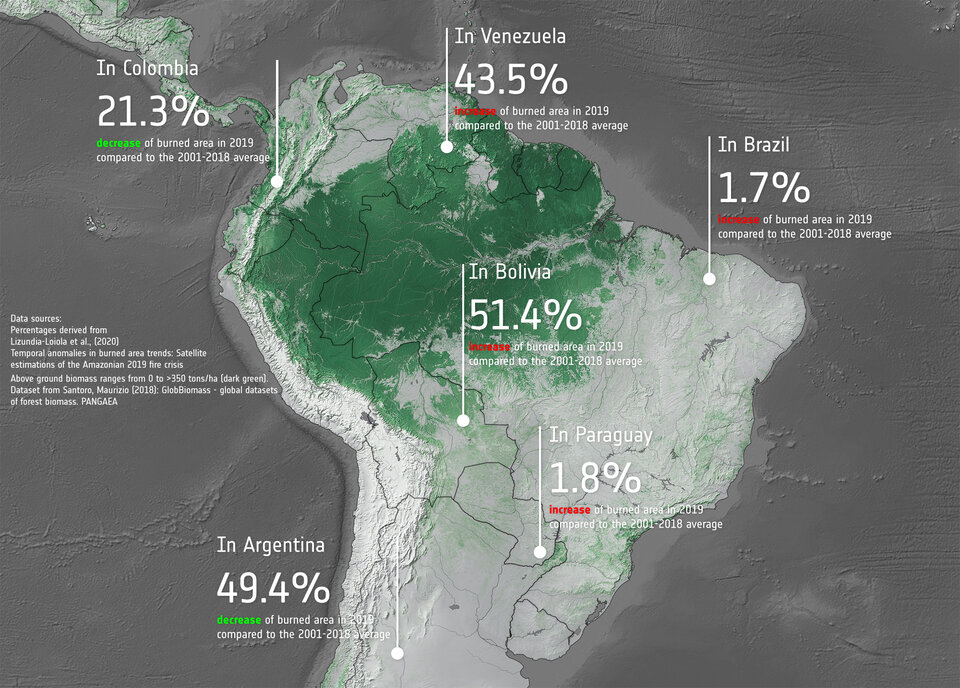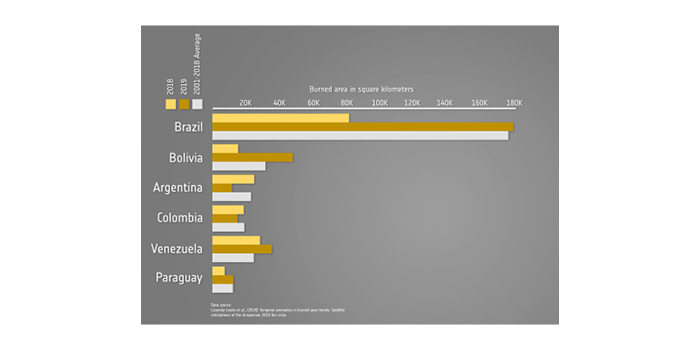The fires that ravaged the Amazon region last year provoked worldwide concern. Yet in spite of widespread coverage in the media and intense international scrutiny, a new analysis reveals that the wildfires were not much worse than previous years.
The detailed analysis used satellite data from the European Space Agency’s (ESA) Climate Change Initiative (CCI) to measure the extent of the 2019 fires.
The analysis, published recently in the journal Remote Sensing, found that while there was a small increase compared to 2018, the number of fires was not much different to the annual average detected over the past 18 years.
According to the paper, areas destroyed by wildfires across the whole of South America rose by around 70% in 2019 compared with the same period of 2018. However the 2019 rate was still only slightly higher than the yearly average over the past 17 years.
Despite being the focus of international condemnation for its perceived inaction, Brazil saw only a 1.7% increase of burned area in 2019 compared to the long-term average. Bolivia, by contrast, saw a 51.4% increase compared to the yearly average.
The burned area estimates used in the study came from ESA’s Fire CCI project, which produces long-term datasets of burned area information from satellites.
Emilio Chuvieco, science leader of the Fire CCI project, said, “Studies such as these are important to quantify and monitor fire activities in places such as the Amazon. However, they indicate the importance of long-term data series and studies using higher resolution sensors, such as the Copernicus Sentinel-2 multispectral instrument, to detect fires.”




